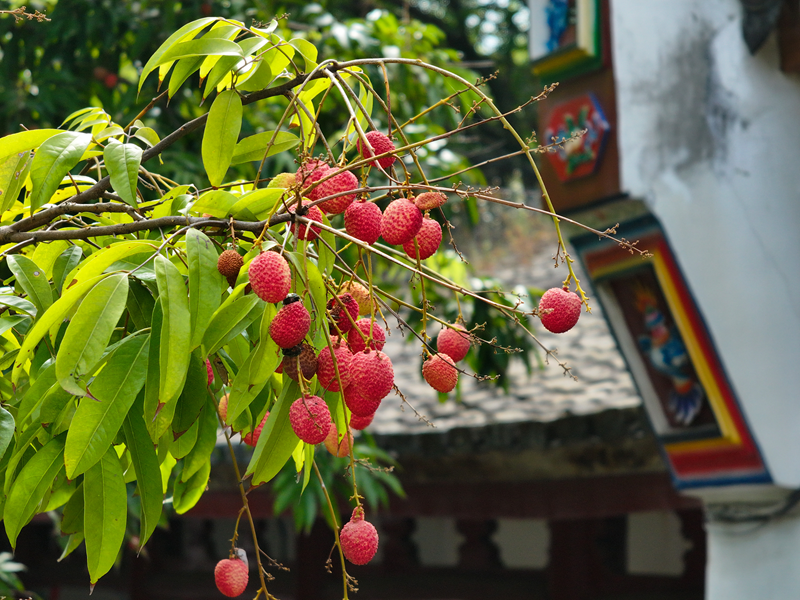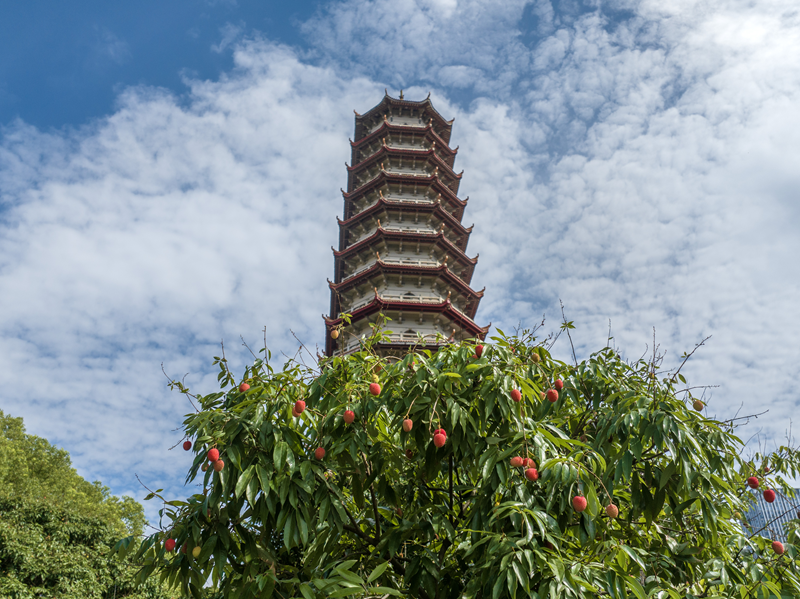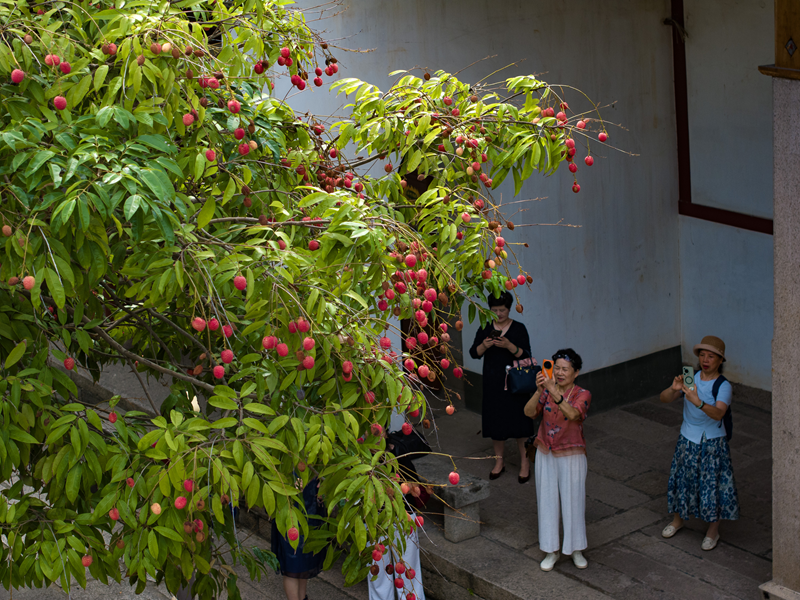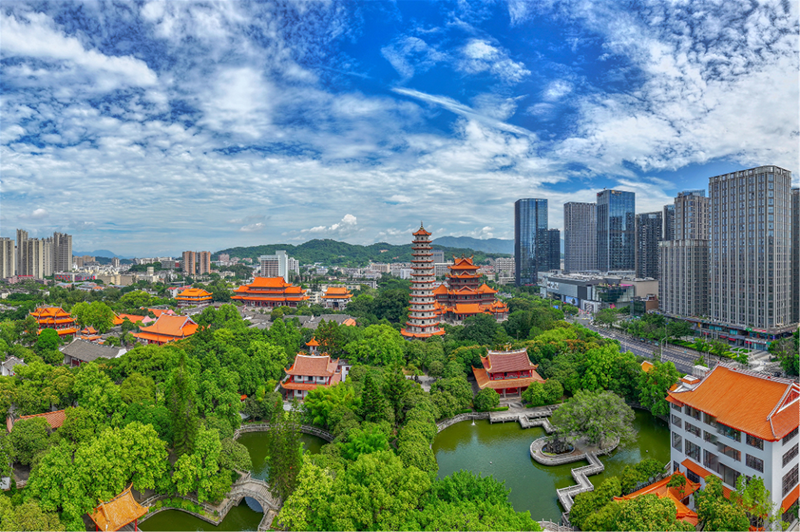
Luscious lychees ripen at Xichan Temple. [Photo/Fuzhou Daily]
No southern Chinese summer is complete without lychees, and nowhere embodies this better than the Xichan Temple in Fuzhou, capital of East China's Fujian province.
There, clusters of ruby-red fruits drape heavily from the branches, their vibrant hues perfectly complementing the temple's ancient upturned eaves.
It's a completely serene and idyllic scene that always draws crowds of visitors to experience Fuzhou's magical blend of history and nature — a living testament to why this is called the "City of Blessings".

Lychees and the Bao'en Temple complement each other in perfect harmony. [Photo/Fuzhou Daily]
Xichan Temple's lychee legacy stretches back over a millennium. Built on the historic place known as Yishan — where lychee cultivation began in the Tang Dynasty (618-907) and flourished in the Song Dynasty (960-1279) — the temple grounds were originally planted wall-to-wall with lychee trees.
Records in the Xichan Chronicles document 400 to 500 trees at its peak, famously bearing succulent varieties with small pits, thick flesh and exceptional sweetness.
Though centuries have passed, the temple still preserves numerous lychee trees, including the celebrated Song Dynasty Lychee Tree near the Bao'en Pagoda and Guanyin Pavilion — all officially registered ancient trees.
Each summer when the fruit ripens, scholars and artists revive a timeless tradition: gathering beneath the boughs with friends to compose poetry and create calligraphy, continuing a cultural ritual as sweet as the lychees themselves.

Visitors and locals love to snap photos at the temple. [Photo/Fuzhou Daily]

A panoramic view of Xichan Temple in Fuzhou. [Photo/Fuzhou Daily]

Copyright © General Office of Fujian Provincial People's Government
Website Identification Code 3500000049Registration Number: 15003084
All rights reserved. The content (including but not limited to text, photo, multimedia information, etc) published in this site belongs to fujian.gov.cn.
Without written authorization from fujian.gov.cn, such content shall not be republished or used in any form.